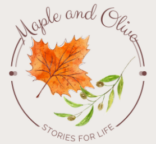When I was in primary school, I wasn’t somebody who was into science subjects. Observing plants and insects didn’t interest me, mixing different chemicals didn’t excite me, and working with lab weights and taking notes bored me to death. I spent my science class mostly looking at different pictures in the textbook and focusing on how to take beautiful notes using different colour pens, rather than paying attention to the content taught in the class.
Then, in Grade 5, something happened. We started learning about weather, and I fell in love with it. I loved observing different shapes of clouds in the sky and learning about what each shape could tell us about the upcoming weather pattern. The pictures and diagrams in the textbook appealed to me, too. For the first time since my science education started, I spontaneously looked for more materials about weather to work on at home.
One day, my mother noticed this new interest of mine, and she told me that I could buy a meteorology encyclopedia if I wanted.
“A meteorology encyclopedia?”
I wasn’t sure if it was a good idea. I already had a few encyclopedias in my bookshelf on science subjects – one about fish, one about plants, one about universe, and more – and they hadn’t been opened for years. I didn’t want to buy another encyclopedia that I was not going to read. That would feel like a reminder of my incapacity to follow through my interest. But my mother kept suggesting, and in the end, I decided to give myself a chance to commit to my new interest with an encyclopedia.
The following weekend, when my family went out for our weekly reading time at a local burger shop, my mother gave me some money and I went to the bookstore next door to find a meteorology encyclopedia for myself. There were two very famous encyclopedia series for children in Japan, and after a long, careful examination of the two versions, I decided on the one whose illustrations I liked more.
Back in the burger shop, I opened my new encyclopedia and started reading it over French fries and my favourite sparkling grape juice. In the book, I found more variety of clouds and more detailed explanation of the mechanism how one could predict the weather from the clouds than in the school textbook. There was also a section about how to read the weather diagrams. Everything in the book interested me, and I loved the peaceful atmosphere I felt from the book itself.
From that day on, I looked forward to reading the encyclopedia over my breakfast before school and over my snack after school every day. Soon, I finished reading the whole book and went back to the beginning to read it over again. Such was my love for the book and the subject.
My love of this subject never ended, and the time I spent with the encyclopedia gave me a new sense of confidence, too. It made me realize that I was capable of following through my interest, and that was even more valuable than everything I learned about weather itself.
